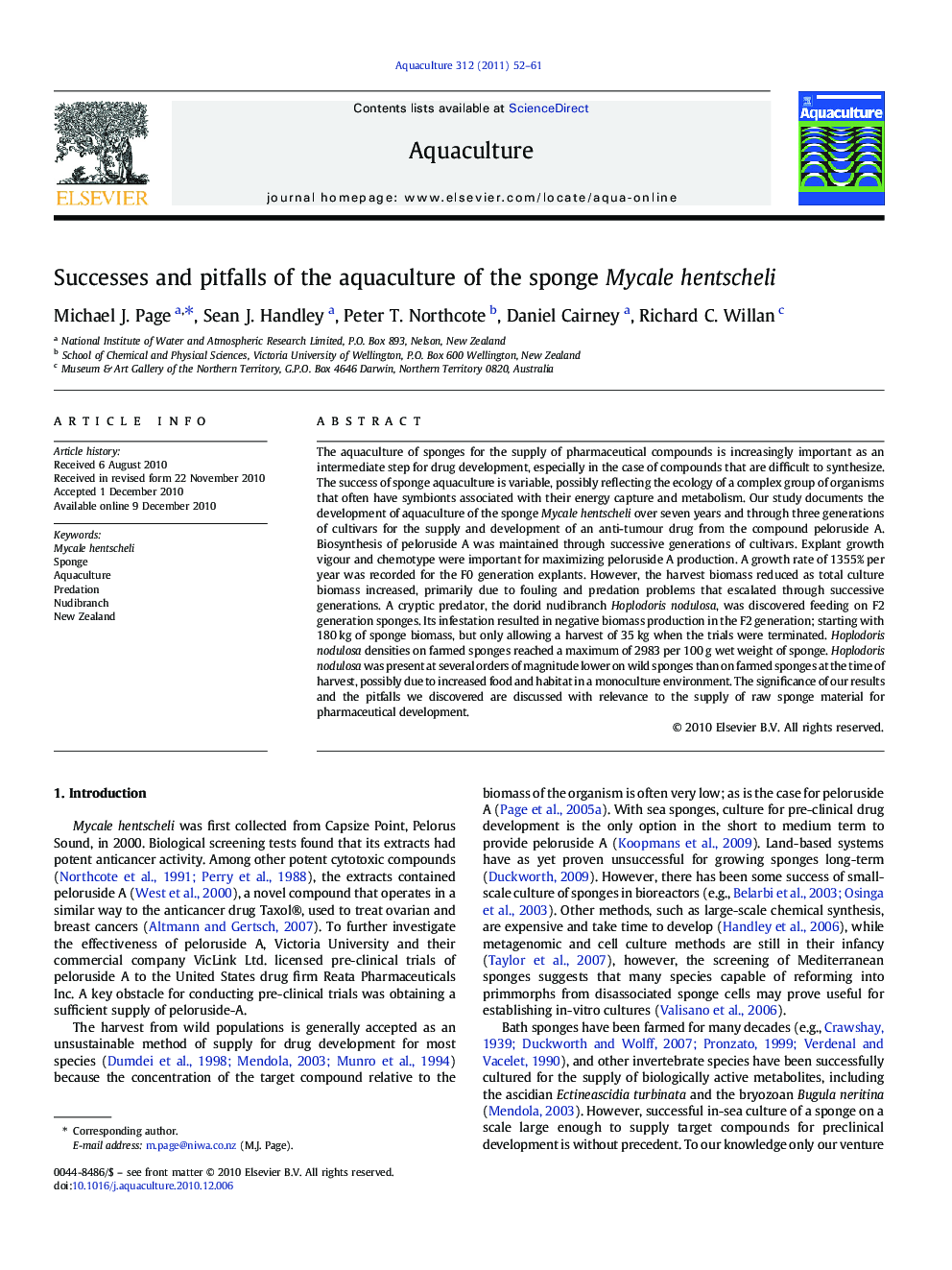| کد مقاله | کد نشریه | سال انتشار | مقاله انگلیسی | نسخه تمام متن |
|---|---|---|---|---|
| 2423288 | 1552913 | 2011 | 10 صفحه PDF | دانلود رایگان |

The aquaculture of sponges for the supply of pharmaceutical compounds is increasingly important as an intermediate step for drug development, especially in the case of compounds that are difficult to synthesize. The success of sponge aquaculture is variable, possibly reflecting the ecology of a complex group of organisms that often have symbionts associated with their energy capture and metabolism. Our study documents the development of aquaculture of the sponge Mycale hentscheli over seven years and through three generations of cultivars for the supply and development of an anti-tumour drug from the compound peloruside A. Biosynthesis of peloruside A was maintained through successive generations of cultivars. Explant growth vigour and chemotype were important for maximizing peloruside A production. A growth rate of 1355% per year was recorded for the F0 generation explants. However, the harvest biomass reduced as total culture biomass increased, primarily due to fouling and predation problems that escalated through successive generations. A cryptic predator, the dorid nudibranch Hoplodoris nodulosa, was discovered feeding on F2 generation sponges. Its infestation resulted in negative biomass production in the F2 generation; starting with 180 kg of sponge biomass, but only allowing a harvest of 35 kg when the trials were terminated. Hoplodoris nodulosa densities on farmed sponges reached a maximum of 2983 per 100 g wet weight of sponge. Hoplodoris nodulosa was present at several orders of magnitude lower on wild sponges than on farmed sponges at the time of harvest, possibly due to increased food and habitat in a monoculture environment. The significance of our results and the pitfalls we discovered are discussed with relevance to the supply of raw sponge material for pharmaceutical development.
Journal: Aquaculture - Volume 312, Issues 1–4, 25 February 2011, Pages 52–61